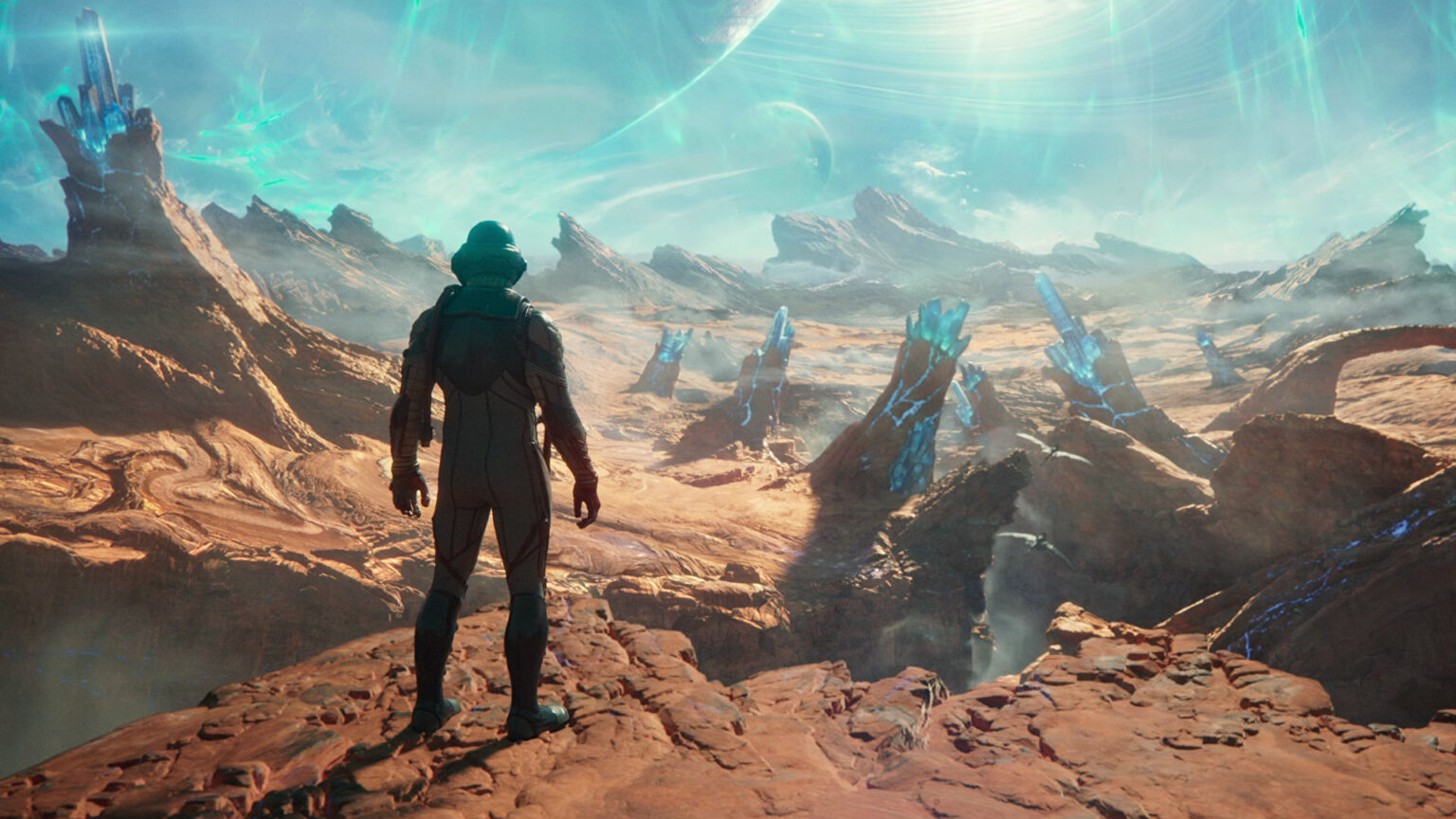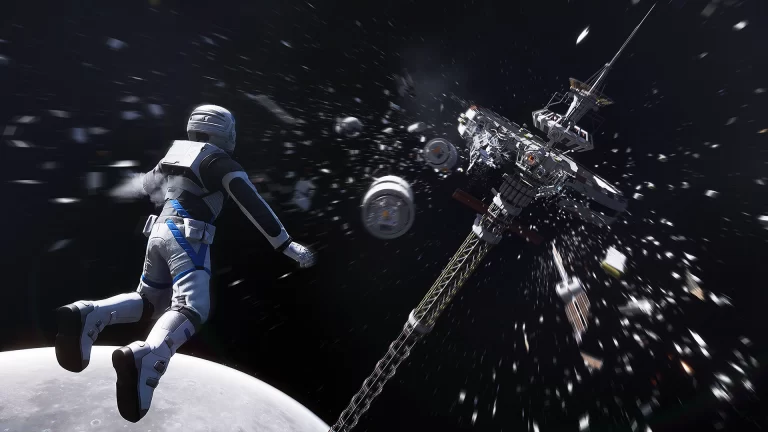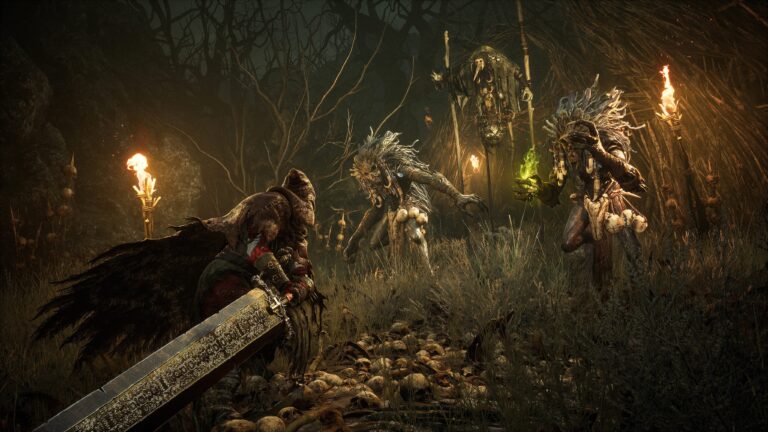We all knew that The Outer Worlds would be coming, but it was still exciting to see it officially announced during the Xbox and Bethesda showcase. A brief CGI trailer showcased the game even though Obsidian Entertainment hasn’t finished the character design, plotline, or gameplay. Clearly, Obsidian Entertainment has a lot of work to do, but they have a solid foundation to build on. The space-faring adventures of the original excelled in well-scripted albeit humorous dialogue, and the sequel can capitalize on those strengths while improving some of its less desirable aspects.
5. Combat and Gunplay
The dialogue, characters, and story of The Outer Worlds were superior to every other feature. Thus, shooting legions of Mauraders became tedious and mundane, getting in the way of more exciting elements. Despite being serviceable, combat was merely a glorified padding system or detour between stories beats. As the game progresses, its clunky and mediocre nature becomes ever more apparent.
To be successful, the sequel needs to upgrade its shooting mechanics to the level of its other more satisfactory qualities. Along with a general refinement, The Outer Worlds 2 would benefit from a greater variety of weapons and enemies. This should elevate combat from a mundane chore to a welcoming aspect of player and story progression.
In addition to gunplay, the stealth and melee mechanics are in a dire need of revamping. Though players can dedicate skill points to these specific character types, the insufficient gameplay functionality makes it a non-option. Because of the clunky melee and the finicky stealth, it’s more fun to invest time in dialogue, giving players an opportunity to avoid combat entirely. The Outer Worlds 2 needs to enhance combat so that players can truly choose their playstyle instead of being pigeonholed by quality.
4. Exploration
While engaging in a quest, whether it be a side or main, The Outer Worlds is a rewarding experience fuelled by moral dilemmas. Exploration and free-roaming are far less enjoyable despite their approachable nature. As opposed to a wide-open world, The Outer Worlds is divided into several mini-areas to explore. Each planet has a small yet unique set of terrain, which is more approachable than an intimidatingly large area.
Even though the approachability was welcome, there wasn’t much reward for navigating a planet. Most quest givers are hanging out in a hub city, leaving the wider environment barren of activities. Instead of running into intriguing storylines or finding enlightening discoveries, the open-world mostly offers a slurry of enemies to fight. The Outer Worlds can and should keep its digestible nature of exploration but open areas should be filled with activities and secrets. Ideally, quests can be naturally stumbled upon while exploring, which is much more exciting than following a marked quest giver.
3. NPC and World Impact
For a game centered around player choice, there is a stark lack of repercussions outside of the main story. Most decisions result in an increase or decrease in faction reputation, but the decision impacts are rarely shown to the player – outside of the factions themselves. At best, NPC will have new lines of dialogue based on a character decision, which is not emotionally impactful whatsoever. It needs to be mentioned that The Outer Worlds does a great job of creating branching storylines based on choice. We’re discussing impact outside of questlines like NPC interactions and major structural differences.
We want the world to undergo drastic change based on player decisions. NPC’s may hurl insults at the player as they pass by or even attack them. Of course, if the player makes positive change, particular NPCs could offer gifts or show their appreciation with store discounts. This would be better than watching NPCs stay idle while the person who destroyed an entire race of Iconoclasts walks by.
Beyond simple NPC reactions, we want decisions to change how the world works. For instance, a decision in Fallout 3 results in a whole town disappearing from the map. Currently decisions impact story outcomes, but ramifications must be more far-reaching, changing the player and the world itself. For instance, diverting power away from Edgewater results in the townspeople gaining one new line of dialogue about the blackout. It would be more impactful to see the town’s people slowly die off or move away until it’s a ghost town.
2. Cinematic Presentation
The Outer World’s presentation could be improved on two fronts: the dialogue menu and town density. Obsidian took the traditional route of listing dialogue options on a screen plastered box. This gives the player a clear and prominent presentation of their dialogue options while indicating exactly how the character will respond. There’s no issue with the box itself, but the accompanied camera work.
Like Fallout or Skyrim, the camera remains stuck on the NPCs as they stare uncomfortably at the player. It’s time to move past this archaic system and inherit a model similar to Mass Effect or The Witcher. When the characters converse, the camera follows their reactions naturally to create an impression of a movie. Just like the dialogue menu the towns are pretty barren as well.
This is evidenced by Byzantium, the largest and richest city of Halcyon. Despite its grand stature, the city is anything but crowded. Three people are idle on the sidewalks at best, which is in stark contrast to the bustling city it ought to have been. There are technical limitations to crowd density, but hopefully, the Xbox Series X technology allows for a cinematic presentation to cities and towns alike.
1. Moral Conundrums
There are many complicated decisions to make in The Outer Worlds, but few are as morally ambiguous as the Edgewater conundrum. It’s up to the player to divert power to a Spacer’s Choice town or a group of deserters. The deserters had good reason to leave the town – it was owned by a corrupt corporation – but diverting power would ruin the lives of several innocent civilians.
This storyline introed the game and set a high bar for choice-based narrative going forward. Sadly, we never felt the same level of quandary again. The sequel needs to include more Edgewater-inspired dilemmas, meaning situations with no clear good or evil choice.
Stay tuned at Gaming Instincts via Twitter, YouTube, Instagram, and Facebook for more gaming news.
No related posts.






